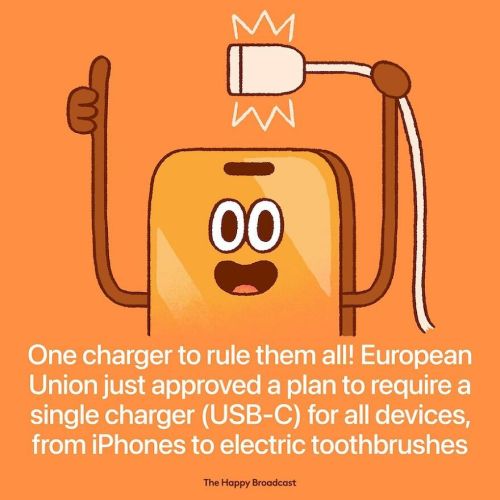6-ingredient Healthy Baked Eggplant Parmesan

6-ingredient healthy baked eggplant parmesan
More Posts from Thesicus and Others

Hi everyone,
For the last day of ADHD Awareness Month, I thought I’d share the difference and similarities between ADHD and OCD. I hope many of you find this helpful. The link to the source will be below.
ADHD
OCD
ADHD Awareness Month

Manfredi Bellati - Isabelle Weingarten (Vogue Italia 1973)


Show some respect, people.
Had a few folks interested in how I made the patches I posted for Solarpunk Aesthetic Week, so I thought I'd give y'all my step-by-step process for making hand-embroidered patches!

First, choose your fabric and draw on your design. You can use basically any fabric for this - for this project I'm using some felt I've had lying around in my stash for ages.

Next, choose your embroidery floss. For my patches I split my embroidery floss into two threads with 3 strands each, as pictured. You can use as many strands in your thread as you prefer, but for the main body of my patches I prefer 3 strands.
Next you're going to start filling your design using a back stitch.

First, put in a single stitch where you want your row to start.

Poke your needle up through the fabric 1 stitch-length away from your first stitch.

Poke your needle back down the same hole your last stitch went into so they line up end-to-end.
Repeat until you have a row of your desired length (usually the length of that colour section from one end to the other). Once you have your first row, you're going to do your next row slightly offset from your first row so that your stitches lay together in a brick pattern like this:

Make sure your rows of stitches are tight together, or you'll get gaps where the fabric shows through.
Rinse and repeat with rows of back stitch to fill in your patch design.

When you're almost to the end of your thread, poke your needle through to the back of the fabric and pull the thread under the back part of the stitching to tuck in the end. Don't worry if it looks messy - no one's gonna see the back anyway.
This next step is fully optional, but I think it makes the patch design really pop. Once your patch is filled in, you can use black embroidery floss to outline your design (or whatever colour you want to outline with - it's your patch, do what you want). I use the full thread (6 strands, not split) of embroidery floss to make a thicker outline.

I use the same back stitch I used to fill the piece to make an outline that adds some separation and detail. You could use most any 'outlining' stitch for this, but I just use back stitch because it's just easier for me to do.
Once you're finished embroidering your patch, it's time to cut it out!

Make sure to leave a little border around the edge to use for sewing your patch on your jacket/bag/blanket/whatever, and be careful not to accidentally cut through the stitches on the back of the patch.
If you have a sturdy enough fabric that isn't going to fray, you can just leave it like this. If not, I recommend using a whip stitch/satin stitch to seal in the exposed edges (I find that splitting your embroidery floss into 3-strand threads works best for this).

And then you're done! At this point you can put on iron-on backing if you want, or just sew it on whatever you wanna put it on. Making patches this way does take a long time, but I feel that the results are worth it.
Thanks for reading this tutorial! I hope it was helpful. If anyone makes patches using this method, I'd love to see them! 😁
every morning i wake up and make the worst possible time management decisions anyone has ever made
Reblog to put one of these in your mutuals’ pocket when they’re not looking


-
 campenellamaniac liked this · 3 months ago
campenellamaniac liked this · 3 months ago -
 starryrika liked this · 5 months ago
starryrika liked this · 5 months ago -
 tinygardenmirmir liked this · 6 months ago
tinygardenmirmir liked this · 6 months ago -
 tifffamy reblogged this · 1 year ago
tifffamy reblogged this · 1 year ago -
 eliph liked this · 1 year ago
eliph liked this · 1 year ago -
 anthonyeater liked this · 1 year ago
anthonyeater liked this · 1 year ago -
 nipple68005me liked this · 1 year ago
nipple68005me liked this · 1 year ago -
 keepers-art-n-craft reblogged this · 1 year ago
keepers-art-n-craft reblogged this · 1 year ago -
 shaylogic reblogged this · 1 year ago
shaylogic reblogged this · 1 year ago -
 shaylogic liked this · 1 year ago
shaylogic liked this · 1 year ago -
 wonhosgrl liked this · 1 year ago
wonhosgrl liked this · 1 year ago -
 profoundlovetale liked this · 1 year ago
profoundlovetale liked this · 1 year ago -
 bellarosagoddesss reblogged this · 1 year ago
bellarosagoddesss reblogged this · 1 year ago -
 bellarosagoddesss liked this · 1 year ago
bellarosagoddesss liked this · 1 year ago -
 makeout-livelonger reblogged this · 1 year ago
makeout-livelonger reblogged this · 1 year ago -
 azfoodporn reblogged this · 1 year ago
azfoodporn reblogged this · 1 year ago -
 cantcomeupwithsomethingcreative reblogged this · 1 year ago
cantcomeupwithsomethingcreative reblogged this · 1 year ago -
 uraveragetoaster liked this · 1 year ago
uraveragetoaster liked this · 1 year ago -
 1petitchat liked this · 1 year ago
1petitchat liked this · 1 year ago -
 throwingmyself2thewind liked this · 1 year ago
throwingmyself2thewind liked this · 1 year ago -
 makeout-livelonger reblogged this · 1 year ago
makeout-livelonger reblogged this · 1 year ago -
 monteangel liked this · 1 year ago
monteangel liked this · 1 year ago -
 lownote8 liked this · 1 year ago
lownote8 liked this · 1 year ago -
 jennyleebob liked this · 1 year ago
jennyleebob liked this · 1 year ago -
 unstablecaffeinatedmind reblogged this · 1 year ago
unstablecaffeinatedmind reblogged this · 1 year ago -
 unstablecaffeinatedmind liked this · 1 year ago
unstablecaffeinatedmind liked this · 1 year ago -
 unlikelychaosdestiny liked this · 1 year ago
unlikelychaosdestiny liked this · 1 year ago -
 depressoespresso13 liked this · 1 year ago
depressoespresso13 liked this · 1 year ago -
 makeout-livelonger reblogged this · 1 year ago
makeout-livelonger reblogged this · 1 year ago -
 pantherking77 liked this · 1 year ago
pantherking77 liked this · 1 year ago -
 i-am-a-lavender-menace liked this · 1 year ago
i-am-a-lavender-menace liked this · 1 year ago -
 lynxsrecipestotry reblogged this · 1 year ago
lynxsrecipestotry reblogged this · 1 year ago -
 lanaskull reblogged this · 1 year ago
lanaskull reblogged this · 1 year ago -
 lanaskull liked this · 1 year ago
lanaskull liked this · 1 year ago -
 pacboomer liked this · 1 year ago
pacboomer liked this · 1 year ago -
 go-zealousdreamcollection liked this · 1 year ago
go-zealousdreamcollection liked this · 1 year ago -
 rewindplay reblogged this · 1 year ago
rewindplay reblogged this · 1 year ago -
 punkartist420 liked this · 1 year ago
punkartist420 liked this · 1 year ago -
 catinacoat liked this · 1 year ago
catinacoat liked this · 1 year ago -
 lil-treats reblogged this · 1 year ago
lil-treats reblogged this · 1 year ago -
 zanygardencollector liked this · 1 year ago
zanygardencollector liked this · 1 year ago




















